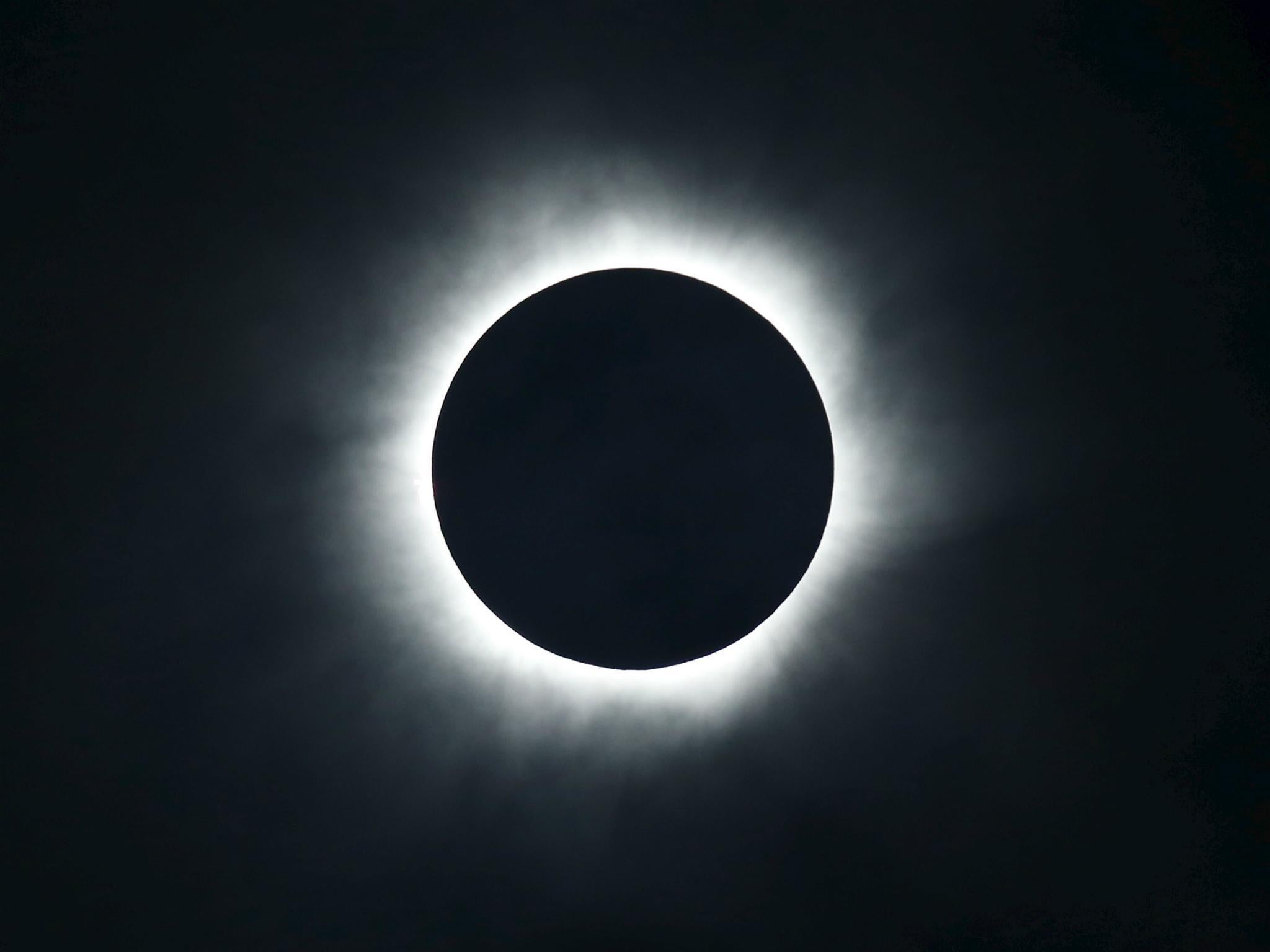Great American eclipse 2017: When and where to see the total solar eclipse in the US
Sun gazers, get ready – here’s where to witness the next totality

Your support helps us to tell the story
From reproductive rights to climate change to Big Tech, The Independent is on the ground when the story is developing. Whether it's investigating the financials of Elon Musk's pro-Trump PAC or producing our latest documentary, 'The A Word', which shines a light on the American women fighting for reproductive rights, we know how important it is to parse out the facts from the messaging.
At such a critical moment in US history, we need reporters on the ground. Your donation allows us to keep sending journalists to speak to both sides of the story.
The Independent is trusted by Americans across the entire political spectrum. And unlike many other quality news outlets, we choose not to lock Americans out of our reporting and analysis with paywalls. We believe quality journalism should be available to everyone, paid for by those who can afford it.
Your support makes all the difference.The next solar eclipse is just around the corner, and this time it's total. But you might have to travel to see it - here's when and where to spot this phenomenon at its best.
What's happening exactly?
A total solar eclipse, also called a totality, occurs when the new moon comes between the sun and the earth, casting the darkest part of its shadow, the umbra, on the earth. During a totality, it’s almost as dark as night.
In a total solar eclipse, the moon covers the whole of the sun, whereas in partial and annular solar eclipses the moon blocks only part of the sun.
When is it occurring?
The next total solar eclipse is on 21 August 2017 between 9am and 4pm EDT. The total eclipse is calculated to last from 20 seconds up to two minutes 40 seconds, depending on where you’re viewing it from.
Where can I view it?
The eclipse will cross the US from Oregon to South Carolina. The path is about 70 miles wide and more than 2,000 miles long, going through deserts, forests, national parks and cities. It will be visible from certain points in the following states: Oregon, Idaho, Wyoming, Nebraska, Missouri, Illinois, Kentucky, Tennessee, North Carolina and South Carolina. In Madras, Oregon, the totality kicks off around 10.15am, while in South Carolina it starts at around 2.45pm.
Interesting places to watch it include Casper, Wyoming, where the 2017 Astrocon national convention of the Astronomical League is taking place from 16 to 19 August. It features talks on astronomy and space science, future missions to explore the cosmos, telescope technology and astrophotography, as well as events such as star parties.
Meanwhile Carhenge in Alliance, Nebraska, is also in the path of the totality. It’s a replica of Stonehenge built in 1987 – but instead of stone slabs, cars are used.
For education en masse, Southern Illinois University is hosting a public eclipse-viewing session in Saluki Stadium, complete with eclipse tailgating, presentations, a citizen-science area and telescope viewing.
What safety precautions should I bear in mind?
As the old adage goes, never look directly at the sun – not even during a total solar eclipse. The sun’s UV radiation can burn your retinas and cause permanent damage. Ensure you don proper protective eyewear – eclipse glasses filter out 100 per cent of harmful ultra-violet, 100 per cent of harmful infrared, and 99.999 per cent of intense visible light, all for a few pounds.
Alternatively, view the eclipsed sun using a pinhole projector – make a small hole in the middle of a piece of paper using a pin or a thumbtack. Ensure that the hole is round and smooth. With your back towards the Sun, hold the piece of paper with a hole in front of another piece of paper, allowing the sun to shine through the hole onto the paper below and project the eclipse.
Is there anything extra special planned?
There’s a whole raft of activities and events planned in celebration of the eclipse, with viewing parties taking place across the US. Find out more at nationaleclipse.com.
Join our commenting forum
Join thought-provoking conversations, follow other Independent readers and see their replies
Comments